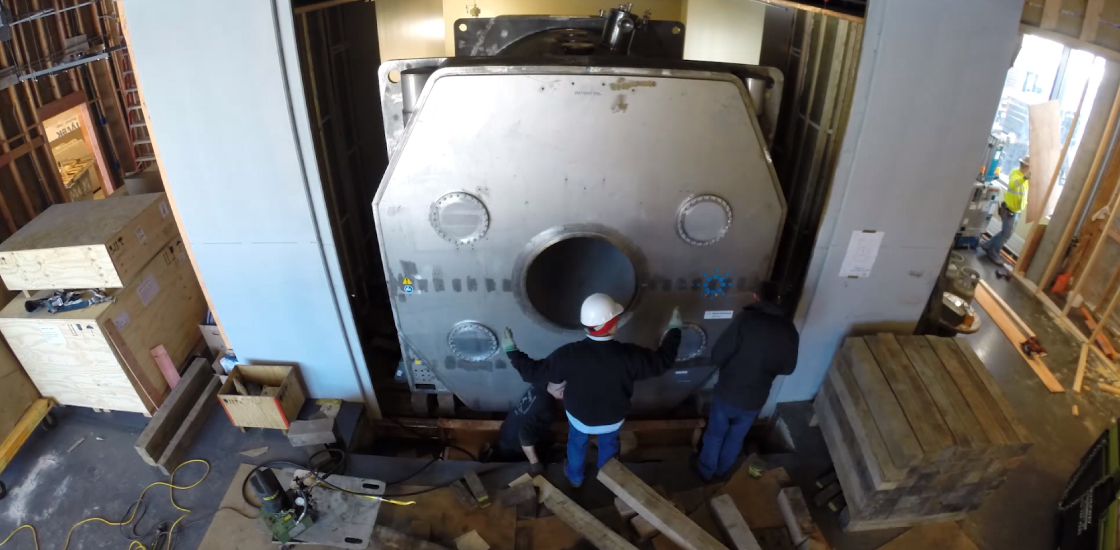Mighty magnet promises to render human brain in intricate detail
A new magnetic resonance imaging machine has the power to reveal the brain’s structure and activity at unprecedented resolution.

A new magnetic resonance imaging (MRI) machine has the power to reveal the brain’s structure and activity at unprecedented resolution.
The machine produces a magnetic field of 10.5 tesla — more than three times that of a typical hospital machine and 50 percent stronger than that of the most powerful MRI machines available. Researchers at the University of Minnesota tested it on a person for the first time in December, producing a detailed image of the thin cartilage lining his hip socket1. In March, they tested its safety on the brain of a volunteer.
The machine should enable researchers to study brain activity at the sub-millimeter scale, within the neuronal clusters that perform basic brain computations. It should also make it possible to see minute lesions that lead to seizures and to study small differences in connectivity in the autism brain.
An MRI machine uses magnets to produce a magnetic field that interacts with body tissues, causing the tissues to release energy. The machine converts that energy into an image. That image may show, for example, the volume and thickness of various regions of the brain.
The stronger the magnet in an MRI machine, the better the picture it produces. But strong magnets can lead to an overheating of body tissues, dizziness, a metallic taste in the mouth and involuntary eye movements. Stronger machines, including the new one, have a system that prevents this.
The most powerful hospital machines, at 7 tesla, can reveal structures smaller than 1 millimeter across all dimensions. For example, these machines can measure activity in and between the six layers of the cerebral cortex.
The new machine should be able to pick out structures smaller than 0.5 millimeters. It is likely to produce the next set of data for Human Connectome Project, a $30 million, multi-institute, five-year effort to map connections in the human brain. Clinical use of the machines may be at least a decade away.
References:
- Nowogrodzki A. Nature 563, 24-26 (2018) PubMed
Recommended reading

Expediting clinical trials for profound autism: Q&A with Matthew State

Too much or too little brain synchrony may underlie autism subtypes
Explore more from The Transmitter

Mitochondrial ‘landscape’ shifts across human brain

